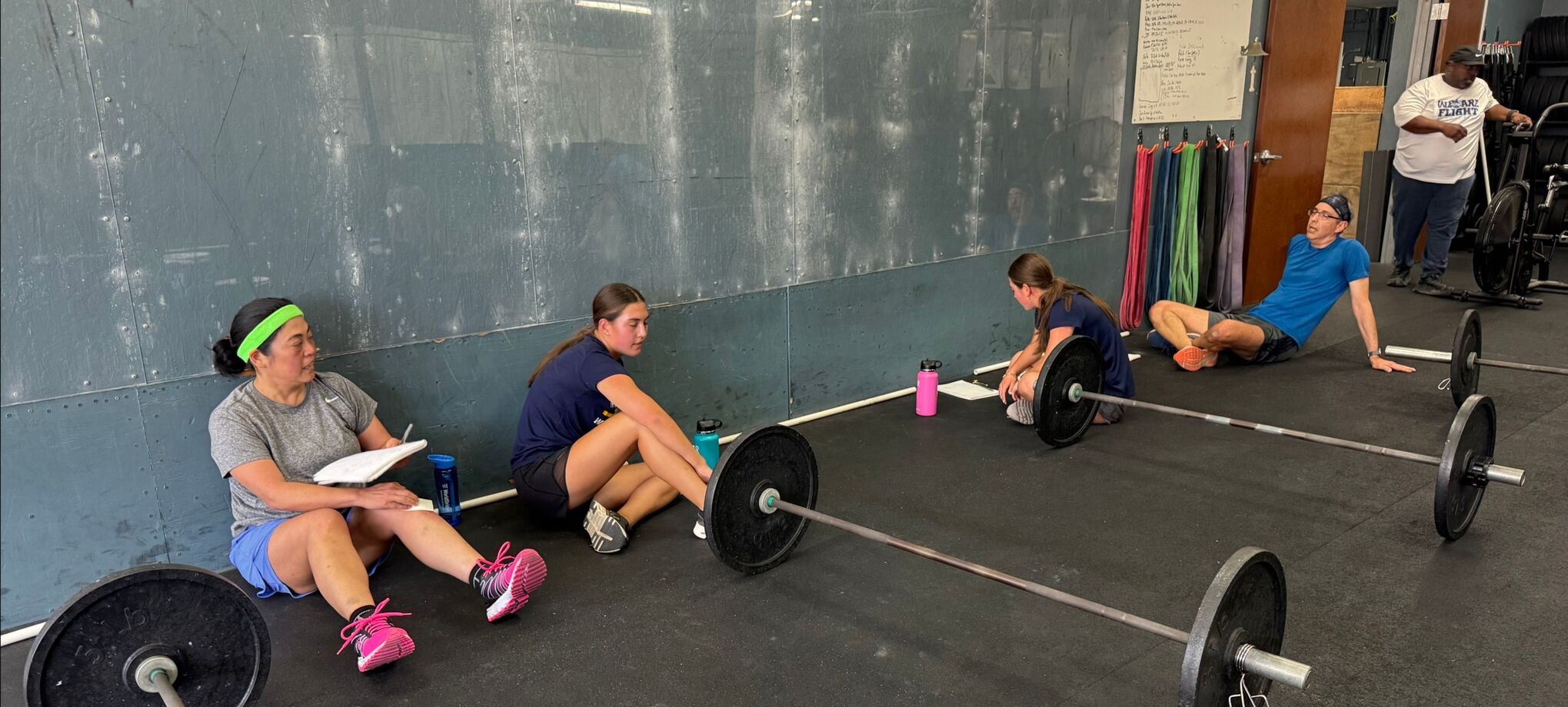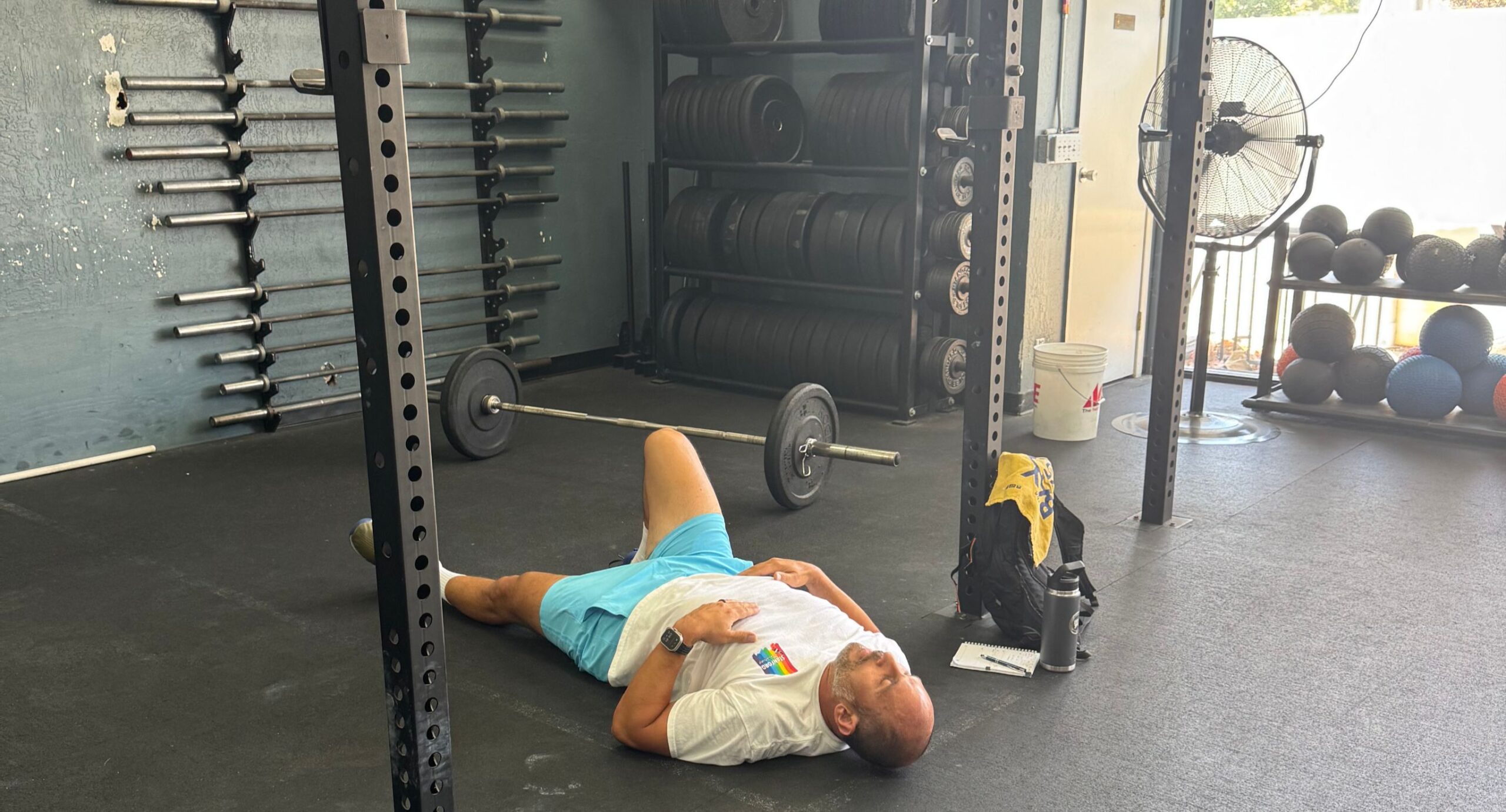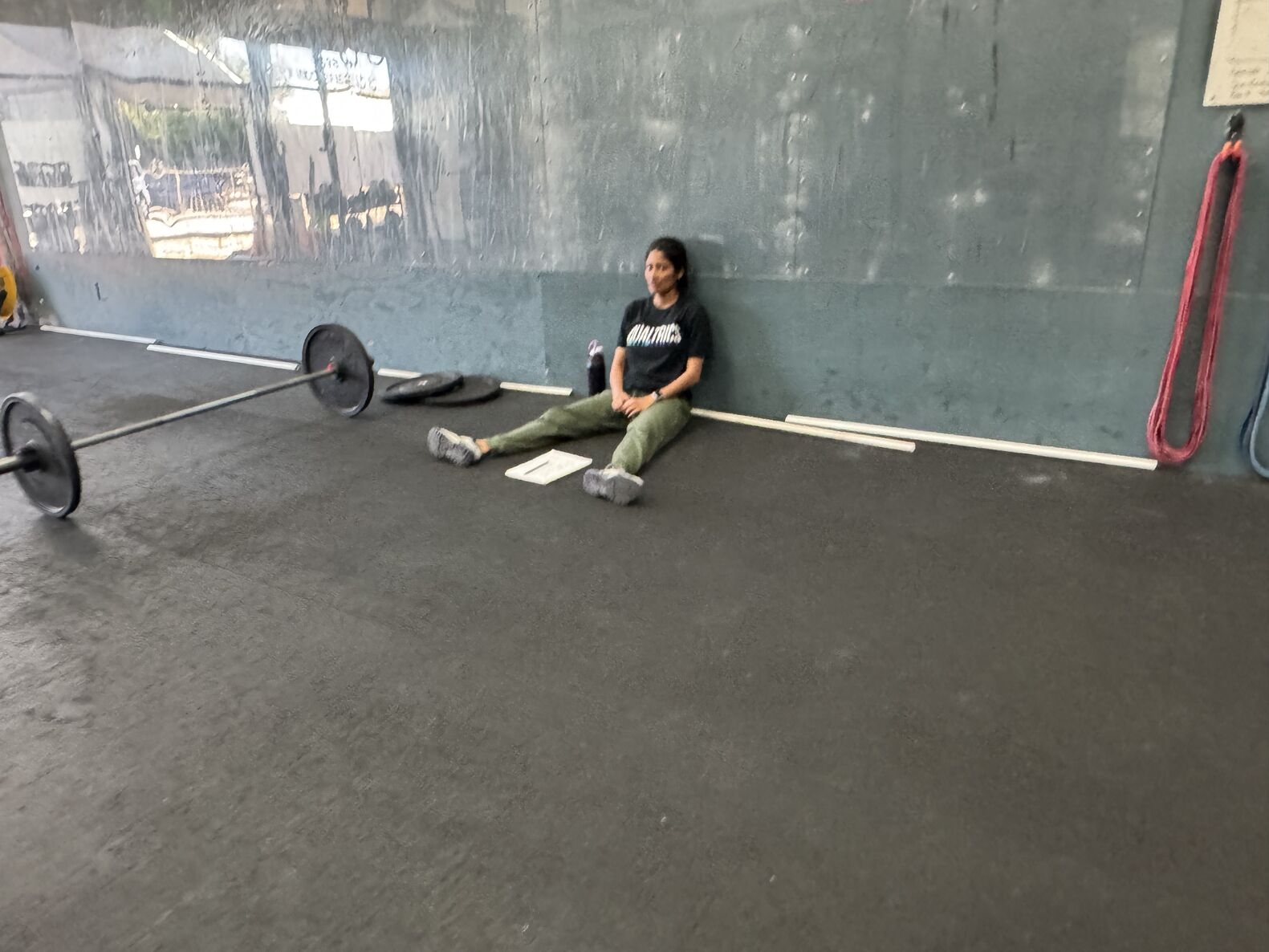How Much Is Enough?

“Steel will never become a sword without getting burned and beaten.”
– Dökeshi no Michi

Deep Squats (Thoughts)
Adapted from The CrossFit Journal article: Recovery Strategies: How to Know When to Take a Day Off (And When to Keep Going)
For seven years, Elsie Jahn pushed her body to the limit.
She started CrossFit in 2011 when she was 21, and by 2012 she was training six or seven days a week. Jahn spent the summer doing a CrossFit competition every weekend, and by September she was so exhausted she took an entire month off. When Jahn returned to training, she didn’t feel recovered. Even after a month’s rest she felt an overwhelming urge to nap most of the day and had trouble regulating her emotions.
Then in 2015 Jahn’s life got even more stressful. She opened her own gym and continued to train for at least two hours a day. The aches and pains accumulated. A shoulder injury prevented her from lifting any weight overhead, and she found her strength decreasing, even though she was training more.
In 2018 Jahn decided she’d had enough. She completely stopped training and closed her gym in 2019. “I was sick of working all the time,” Jahn said. “I was sick of training. I actually barely trained in 2019. I just was not excited about it. I didn’t want to do it,” she said.
Rest and recovery are essential parts of training, but it can be difficult for some CrossFit athletes to strike the right balance. Some athletes, like Jahn, push themselves to the brink, not realizing they’re sabotaging their own progress by training too often. Other athletes struggle with motivation and take too much time off then wonder why they aren’t improving.
Write It All Down
In the early days of CrossFit, most athletes followed a three-day-on, one-day-off, two-day-on workout schedule. That usually meant working out Monday through Wednesday, taking Thursday as an active recovery or rest day, and then finishing with workouts Friday and Saturday. Others followed a consistent three-day-on, one-day-off schedule.
Joe Westerlin, a Level 1 Seminar Staff Flowmaster who founded CrossFit Omaha in 2007, said this schedule came from observations of early CrossFit athletes. “It was found they were able to maximize both volume — meaning number of workouts in a week, month, year — and intensity with that schedule,” Westerlin said.
“Instead of going all week long and then taking two days off, the belief was that three days on and one day off would allow you to keep the intensity high before those rest days came,” he said. The other advantage of this schedule, Westerlin said, was it provided five to six workouts in a week, which was more than a traditional training schedule.
The problem with this approach, however, is there’s no room for individual variation. Not everyone reacts to training in the same way. Your individual response can change over time due to aging, illness, stress, or a variety of other factors.
“You certainly want to go based on how you feel, but our minds can be deceiving,” Westerlin said. Westerlin says the best way to develop a recovery strategy is to focus on measurable, objective factors.
“Regardless of the work-to-rest schedule somebody picks, we should never lose sight of the fact that your results will tell the truth,” he said.
If you regularly experience improvements in the gym, your health is good, and your injuries are minimal and manageable, then your recovery-to-training ratio is probably just right. However, if you aren’t seeing progress in the gym, you have chronic or acute injuries that don’t seem to go away, and you’re constantly feeling tired, you may need more recovery days.
The only way to know for sure is to start tracking everything — not just your workouts and nutrition but your health markers and state of mind. Some find wearable health trackers, like WHOOP, make tracking this information easy.
A lack of recovery might not be the only culprit if you’re feeling exhausted and your performance is suffering. The cause could also be nutrition, sleep, or stress. It’s important to pay attention and record not only your workout scores and lifts but how you feel each day and details about your nutrition and sleep patterns. Once you start writing down not only your scores but also how you’re feeling, your motivation levels, how you’re sleeping, and your nutrition, you’ll get a better sense of your ideal recovery schedule.
“If you’re noticing a regular pattern of lethargy, and you notice sleep disruptions, or if you’re noticing vast differences in your resting heart rate at different times of the day or your blood pressure, then that could certainly be an indicator that something is off,” Westerlin said.
Recovery Equals Strength
Once Jahn started doing CrossFit again in 2020, she took a completely different approach. She found a strength-based mobility company called Primal Mobility and resolved her shoulder issues. Instead of training hours a day, every day, Jahn now works out for about an hour a day, five days a week. She only does high-intensity workouts twice a week and makes sure she fits in longer bike rides or runs on the other days.
“I feel a lot better now,” Jahn said. “I’m not tired all the time and I’m more consistent with my sleep.” Jahn also noticed an improvement in her performance.
“I’m back to lifting weights that I was lifting in 2018, when I was peaking,” she said. She’s consistently adding weight to all her lifts every month, and she doesn’t have any of the constant aches and pains she experienced previously.
“It’s more fun again, too,” she said.
Not every athlete pushes too hard. Some disappear from the gym for days at a time at the first hint of soreness. This too impedes progress. “Everyone has individual differences in both physiological and psychological tolerance,” Westerlin said.
“There are some who have an incredible psychological tolerance, and sometimes they’re pushing themselves when they shouldn’t be. But then we also know that there are people that are the opposite of that. They cave to the mental side. Even though they’re not necessarily ready or requiring a rest day, they take it anyway because it’s what their mind is telling them,” he said.
If you know you struggle with motivation, push yourself to go to the gym even when you feel tired. Track your progress and health markers, and if your scores improve and you feel good, stick to the schedule.
What to Do on Your Rest Day
Once you’ve figured out your rest day schedule, what should you do on your day off? Spend the day on the couch, engage in some light exercise, or just stretch and work on your mobility?
Westerlin said the goal with recovery days is to create blood flow. You can achieve that through movement with low-intensity exercise like walking or riding a bike, or just follow your normal warm-up and cool-down routine and skip the workout.
Stretching, massage, and foam rolling are also excellent rest day activities that help improve blood flow and aid recovery. Along with encouraging blood flow, your rest days are also an opportunity to give your nervous system a break, especially if you typically train high-skill movements at high intensity.
Nutrition First
The most common mistake Westerlin sees when it comes to recovery has to do with what happens in the kitchen.
“There’s certainly a large number of CrossFit athletes of the everyday variety that just neglect the nutritional component in general, and that can inhibit your ability to get the results that you want,” Westerlin said.
Eating processed foods, refined sugars, consuming excessive amounts of alcohol, and not eating enough protein creates unwanted inflammation and inhibits the body’s ability to rebuild and repair.
“Not only are you not getting the body composition that you desire and building the muscle mass that you desire, but you’re creating sickness in the body, whether that’s metabolically or whether it’s orthopedically,” Westerlin said.
If you’re the type of person who struggles with mental toughness and has trouble motivating to regularly work out, you might consider sticking to a strict schedule for your workouts and recovery days. However, if your coaches and training partner have told you that you have a tendency to overtrain, listen to your body and take rest if you feel exhausted and unmotivated.
“Choose rest before it chooses you,” Westerlin said.
See you in class.
Tim

What’s Going On?
Endless Summer Teen Class
Who: Boys and Girls aged 12-17
Dates: June 10th – July 31st
When: Tuesdays/Thursdays at 4pm
*Email [email protected] to sign up*
Individualized Skill Training
If The Summer has you feeling motivated to learn a new skill or to refine one, Coach Rebecca has new availability to help. Contact her and set up a single session or regular appointment at [email protected]
CFPA Thorne Supplement Store
Overheard in Class:
“You didn’t say it, but I heard it.”
Timfluencing
Playing to Win by: Michael Lewis
When New York Times best-selling author and journalist Michael Lewis got involved in his kids’ local softball league, it all seemed so wholesome and simple. Ten years later, his family looked back to find that they had spent thousands of dollars—not to mention hours—and traveled thousands of miles in the service of a single sport.
All over America, families are investing blood, sweat, tears, and retirement savings in their children’s sports careers, all with the ultimate goal of…what exactly? A college scholarship? A professional contract? Simply the taste of victory?
Through the lens of the highly competitive world of girls’ softball, Lewis reveals the youth sports industrial complex that has arisen to aggressively monetize after-school pastimes. The major players aren’t the ones on the field—they’re the ones stripping the pockets of unwitting parents to the tune of billions of dollars a year, creating an arms race of amateur athletics and enabling the Varsity Blues scandal. So what’s in it for the parents—or, for that matter, the kids themselves? This from-the-bleachers portrait of our national obsession with youth sports explores the consequences of high-stakes play for families, communities, and the kids in the game.
Tim’s Takeaway:
The author uses his typical wealth of statistics and extrapolations to compare leagues, countries and cultures. I relate to a lot of his observations, though I differ in the “WHY?” we go all in on being a “club sports” family. I will save my opinion on youth sports and use a quote from a review on Substack.
“Michael Lewis may question the time and money his family invested. He may hate the extreme pressure put on boys and girls across the country. He may wonder if we could reallocate resources elsewhere. But I bet if you gave him truth serum and asked if he’d change anything about the path he and Dixie took….and took together….he wouldn’t change a thing.”
Thank you for your support.
I look forward to what we will do together.



